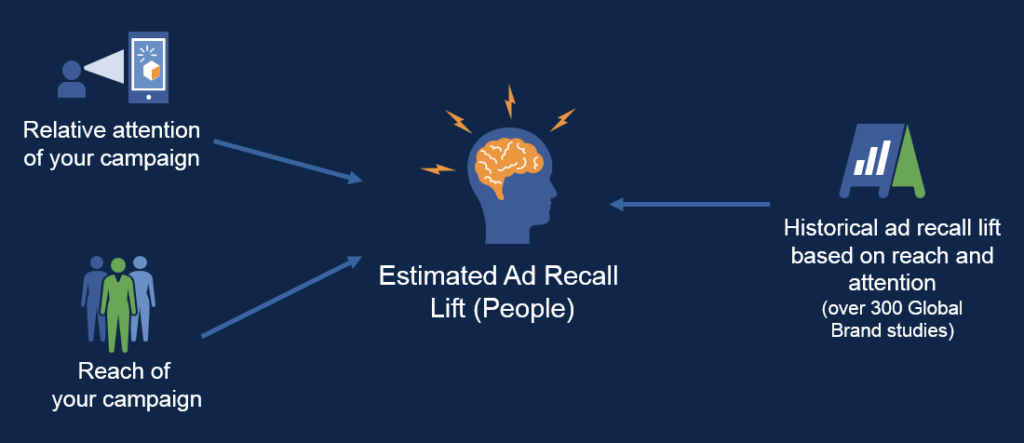Late in 2015, Facebook announced the release of its newest and most advanced ad objective: Brand Awareness.
If you’ve never used this ad objective before or it’s the first time you’ve heard of it, in today’s article I’m going to breakdown everything you need to know.
What is the brand awareness objective?
As the name clearly suggests, Facebook brand awareness objective focuses on maximizing the amount of people who will recall your brand after viewing your ad.
Unlike your typical Facebook ad objective, brand awareness objective uses a complex algorithm to provide real-time data on who is most likely to remember your ads:
Facebook states:
“Brand awareness optimization is designed to help advertisers find the audiences most likely to recall their ads. By analyzing hundreds of brand campaigns we found that the longer someone spends with an ad, the more likely they are to remember what they’ve seen.”
Brand awareness objective is best aligned with goals to increase the recall of your brand, a specific product or service with your audience. It should not be used for generating sales or leads (there’s better ad objectives for that).
Estimated Ad Recall lift explained
Estimated ad recall lift is the total number of people Facebook believes will remember your brand/product if they were asked about it within 2 days of seeing your campaign.
Using its own complex algorithm, Facebook combines the reach of your campaign, the attention users have given it so far, and uses data taken from over 300 global brand studies to provide you with an estimation:

Estimated ad recall lift will display a numeric figure of the total amount of people who will remember your brand within 2 days of viewing your ad:

You’ll then be able to optimize your campaigns to be shown to people who are more likely to recall your brand to smash your objective.
The difference brand awareness and page post engagement objectives
The biggest difference between brand awareness and page post engagement objective is that the latter cannot track user sentiment in real-time. Brands rely on click-through rates, likes, comments and shares to decide whether their post is achieving the goal they set out when using page post engagements.
The problem with this is that data has shown that several thousands likes doesn’t necessarily mean a campaign has achieved its goal in increasing a business’s awareness with new prospects.
For example, it’s not uncommon for businesses to receive hundreds of likes for product ads but never make a sale from it.
Facebook’s brand awareness objective solves this problem by allowing you to optimize campaigns to reach your goals. You can optimize for:
Brand awareness – this will serve your ads to people who are most likely to recall your brand/product within 2 days.
Reach – will optimize your campaign to reach the maximum number of people possible. Optimizing for reach is best used when you’re running time-sensitive campaigns or when your target audience is very small.
Reach optimization model allows you to set the frequency of ad delivery between 1-90 days to ensure you don’t annoy your audience with too many ads.
Facebook state that their new brand awareness objective on average drives a 60% higher brand recall of than page post engagement objective.
How direct response marketers can use Brand Awareness objective
Brand awareness objective will reveal to you in real-time with a certain degree of integrity the recall people will have with your ads, and the whether your objective (increasing awareness) will be achieved.
These insights allow you to predict results before they happen. If a campaign is performing below expectation, the plug can be pulled and a new idea implemented, new audiences targeted or a new ad created without spending too much money or wasting weeks of resources.
If a campaign is generating the results you were hoping for, you can increase investment sooner to maximize its success.
Rather than spending a good chunk of your budget before getting useful metrics to decide your next course of action, having the ability to view data much earlier in the campaign process lets you make the decision a lot sooner, minimizing your losses and scaling the wins.
Estimated ad recall lift is an educated prediction and should only be used as a guideline for making your choice on what action you will take next. It does not take into account your ad copy or the message you’re using which will sway the estimation.
A great way to make use of the new brand awareness objective is to run campaigns indefinitely with a small daily budget optimizing for brand awareness . This will create consistently in your branding efforts and compound over time to get more people aware of your brand and products.
Summary
Brand awareness objective will be huge for upcoming and already established brands who want to reach thousands of people, while maximizing every dollar they spend to do so. The objective is Facebook’s first that promotes forward thinking rather than the ‘sit-and-wait’ approach many use with other ad objectives.
At this moment in time the brand awareness objective can only be accessed by your account manager for Facebook and Instagram. If you’d like to know more about how your business can benefit from using Facebook’s new brand awareness objective, get in touch with us today.